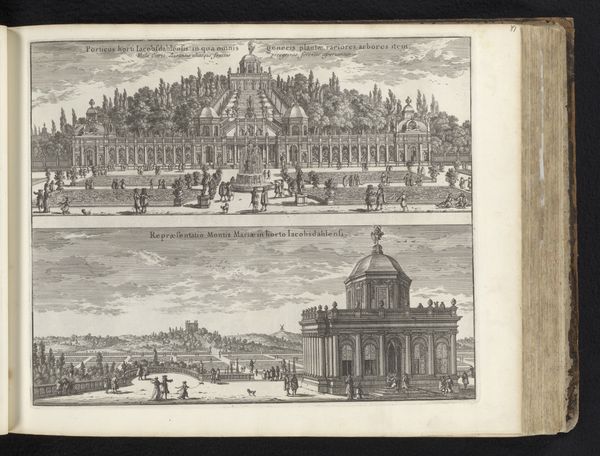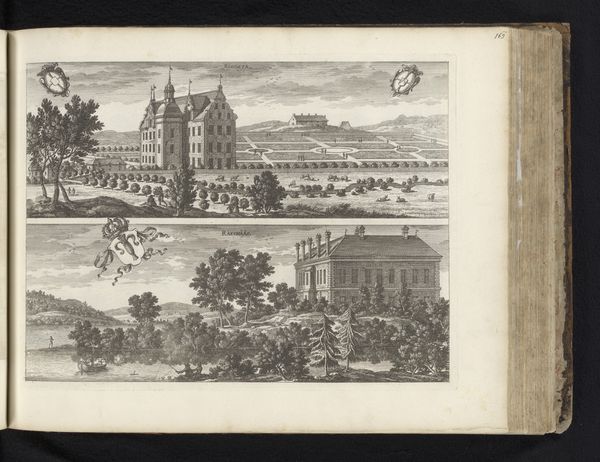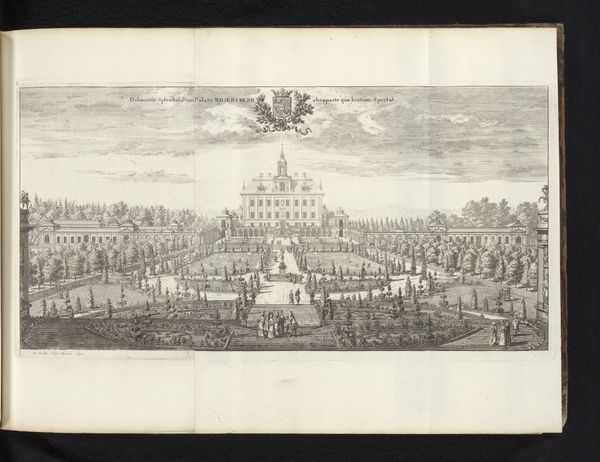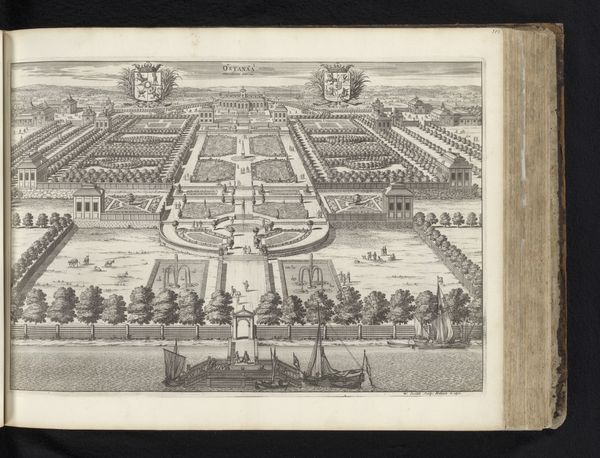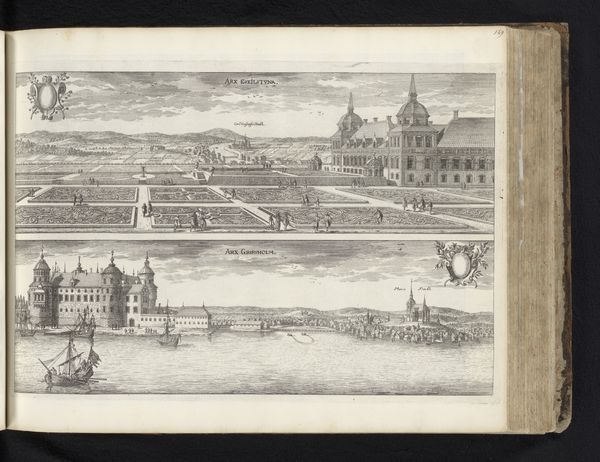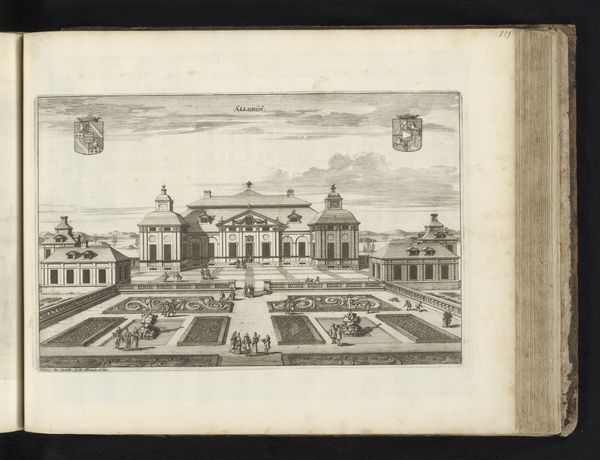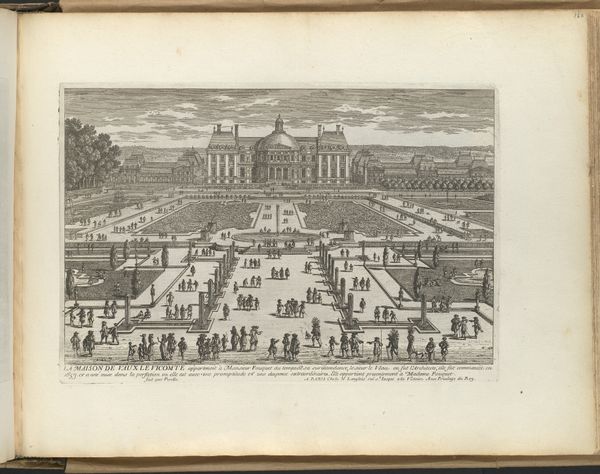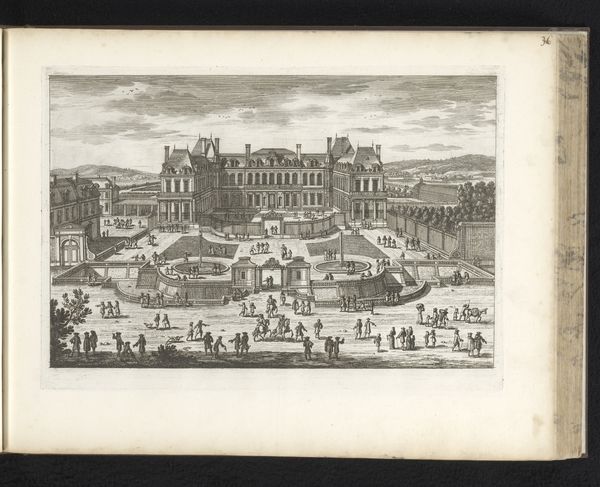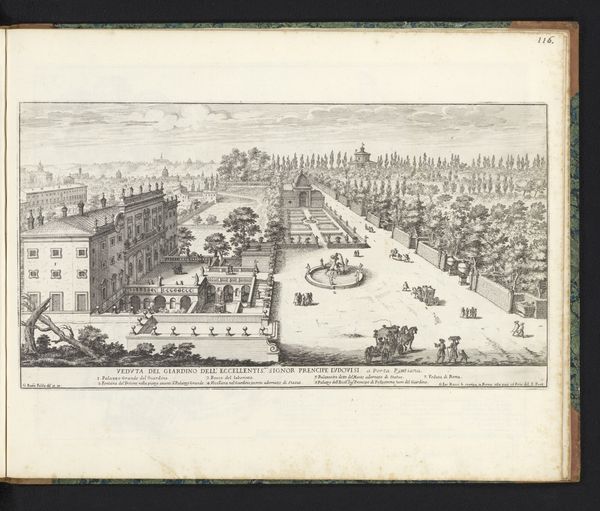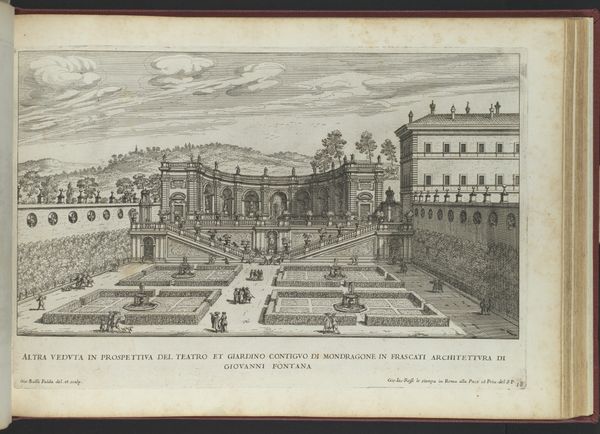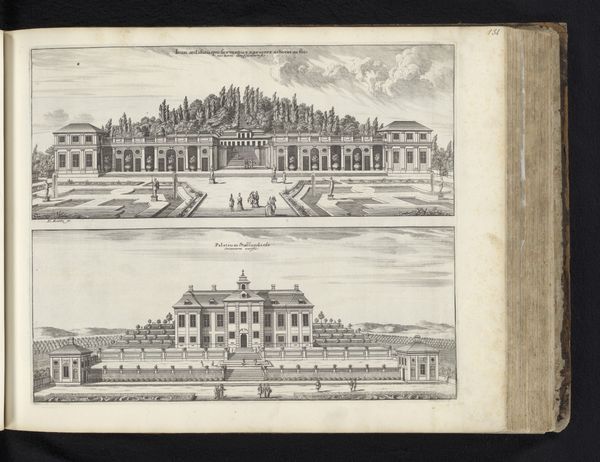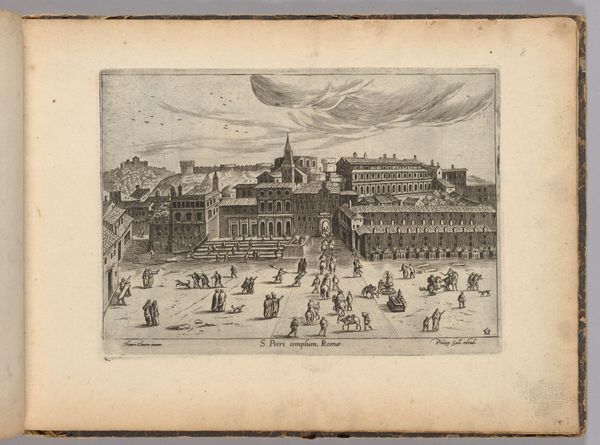
Gezicht op slot Rosersberg en de tuin vanuit het zuiden en het uitzicht op de tuin aan de noordzijde 1696
0:00
0:00
willemswidde
Rijksmuseum
engraving, architecture
#
garden
#
baroque
#
landscape
#
cityscape
#
engraving
#
architecture
Dimensions: height 279 mm, width 337 mm
Copyright: Rijks Museum: Open Domain
Curator: Today, we are looking at "Gezicht op slot Rosersberg en de tuin vanuit het zuiden en het uitzicht op de tuin aan de noordzijde," an engraving created by Willem Swidde in 1696. Editor: My first impression is one of formality, even constraint. The composition, divided into two scenes, feels meticulously planned, lacking spontaneity. The use of line, typical of engraving, emphasizes the geometric order, but the detail is exquisite. Curator: The print gives us insight into the meticulous planning required to manifest Baroque gardens of this period. Notice how labor has been deployed to transform the landscape according to prescribed ideals of order. Consider the axes, symmetry, and controlled perspectives. The medium of engraving itself demands an industrialized process. Editor: Absolutely. The parallel lines and cross-hatching create depth, shadow and light. The details in the architectural rendering – look at the columns and statues. The rigid geometry almost makes me forget it's a garden teeming with life! And yet the tonal range in black and white flattens it. Curator: It’s a record of labor and resources channeled into producing this perfect landscape. One can almost hear the snip of shears in this display of control and refinement intended for a specific class of viewer, one whose privileged status it tacitly acknowledges. Editor: I suppose my perspective stems from analyzing how these elements—line, form, contrast—structure the composition, revealing its meaning through visual relationships. Curator: I am drawn to think about this print not merely as a representation, but as an object created with purpose by Swidde to capture Rosersberg’s ideals. Who was commissioning these kinds of works and for what purposes? This gives insight into the power dynamics. Editor: Very insightful. I can certainly see how examining the social and economic context deepens my appreciation for this highly formalized artistic depiction of nature, transforming a picturesque location into a meticulously ordered space. Curator: Indeed. Thinking about labor reminds us of the real work needed for art to flourish. Editor: Agreed. A fascinating dialogue between control and expression captured in ink.
Comments
No comments
Be the first to comment and join the conversation on the ultimate creative platform.
